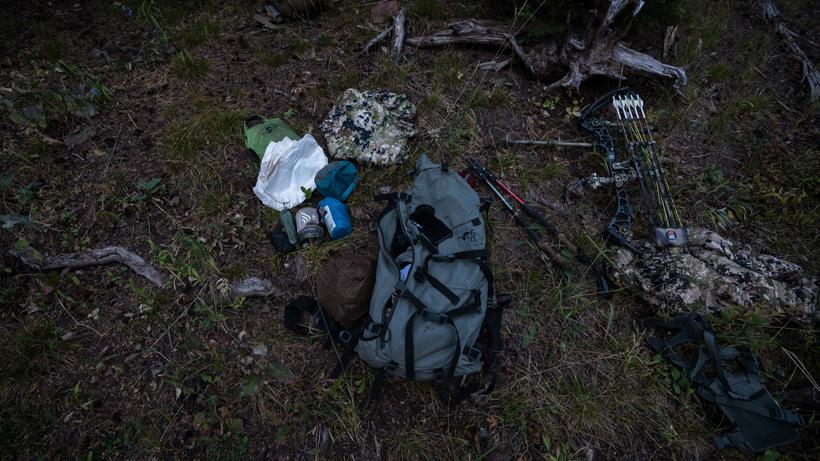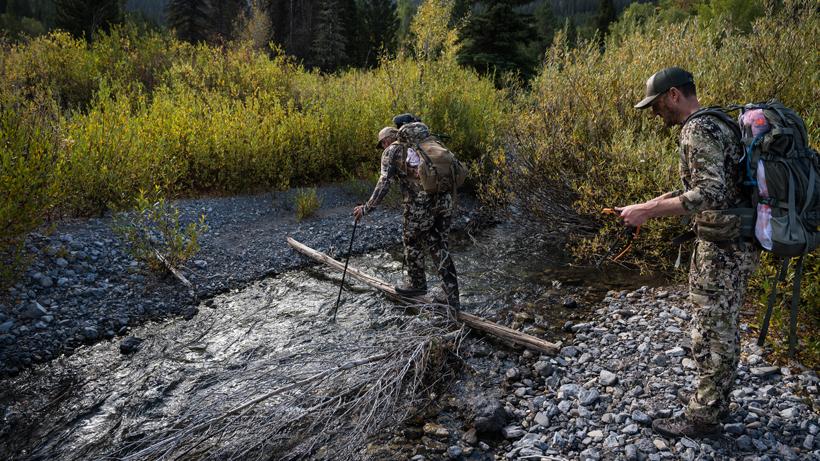






Before I moved out West and became more familiar with the western mountains and all that they entail, there was nothing more daunting and intimidating than backcountry hunting and camping — especially when thinking about camping miles deep from the nearest trailhead in the Rocky Mountains. After all, the western mountains are big, remote, ever-changing and there are an abundant amount of predators like bears, wolves and mountain lions in every nook and cranny. At least that’s what I thought when I was planning my first backcountry camp-style hunt. Do not get me wrong: the mountains are big, remote, ever-changing and there are predators, but you can adapt and overcome the wild elements with a bit of practice and familiarity. To do this, I suggest getting good gear, going on non-hunting camping expeditions and setting your expectations appropriately. It does not matter if you are hunting out of a spike camp or carrying your camp on your back; practice makes perfect and makes you more confident in your gear and able to root out flaws as well.
Though you do not need the most expensive gear, quality backcountry gear is essential. When camping and hunting in the backcountry, weight and durability are keys to success. You need to have lightweight gear that is willing to withstand the harsh elements of wind, water, temperatures and some stabs and jabs. In most situations, when it comes to quality gear, you can bet that the lighter it is, the more it will cost. There are tons of companies out there selling backcountry gear; however, not all of them are equal. You have the choice to try some new or unknown brands or go with names you have heard of and get name-brand gear, but pay the price. Though brand names are not always important, it does tell you something about their commitment to quality and reputation over time. Unless you have a lot of money saved up for quality gear, it might be a good idea to start getting it over time. To give you an idea of the cost, for my backpacking gear setup, including a pack, I spent well over $2,000 and that didn’t include clothing or weapons. This might even be on the low end of most western hunters’ backcountry setups. Once you get some quality gear, you will need to take care of it and make it last. Overall, quality gear is worth it and the team at goHUNT can help you get started since they only use and sell trusted western hunting products.
Whenever you get new gear, there are two things that I suggest. First, you need to examine the equipment as soon as you receive it. You need to get it out of the box and set it up at home. Seek out imperfections, flaws or damage and, if you find them, get the item replaced as soon as possible. If it is a tent, see how easy it is to set up and think about if you will be able to do it alone in the dark on a windy day. Many people buy good gear, throw it in their hunting bag and take it to the mountains to try it out first. This can be a colossal mistake if something happened to the gear in transit or you do not know how to set it up along the way. I recently bought a tent and set it up in the backyard on a lightly breezy day. One of the rods snapped after just a few hours. If this had happened in the mountains, I would have been out of luck. This brings me to my second suggestion: get familiar with your gear. After you set it up, plan to go on a non-hunting camping trip. It doesn’t have to be to the Rocky Mountains, but if you live near a remote area, go out with some buddies or friends on a weekend camping trip and see what you like and do not like. If you are paying hundreds or even thousands of dollars for gear, then you should love it. As mentioned, the GOHUNT Gear Shop has a lot of quality gear that the team at GOHUNT stands behind, so starting there would be a good place. However, not everyone is the same and some people do not like specific pads, tents, bags, packs and other gear that others love. Get familiar and put your gear to the test before it is go time and you do not have a chance to replace it.
After you have purchased some good quality backpacking gear, tried it out at home and on a small expedition, you need to set realistic goals for yourself. It is easy to get carried away and think that you will do a five- or six-day backcountry hunt and not return to the trucks for supplies. This definitely is possible, but also not reasonable for everyone. You need to understand what you would need to pack and then put it all in your pack before your hunt. Can you fit enough food, water, supplies and gear in your pack? How much will that weigh and will you be able to lug that around the mountains? To determine all of this, I always pre-pack my pack weeks before my hunt. I like to organize how everything will fit and decide how many days I will be physically able to carry this pack on my back. Using this information, I make a realistic goal of how many days I can spend back in the backcountry and decide if I plan to keep my camp at one spot or carry it on my back.
There is nothing that compares to being miles from civilization in the mountains, listening to bugling bulls and waking up and hunting right from the tent. However, there is quite a bit of gear, planning and work required to make sure you get on and off the mountain alive. Get quality gear, get familiar with your gear by using it and set realistic expectations for your hunt. Overall, backcountry hunting and camping can be a grueling task to plan and undertake, but it is a fantastic experience.